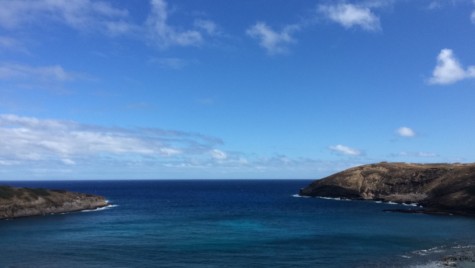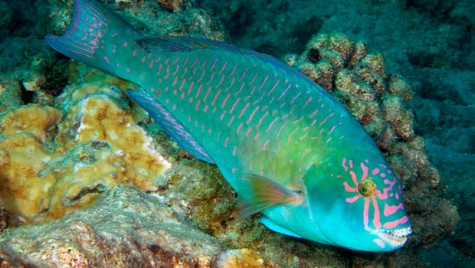The Conundrum With Snorkeling: How To Experience Nature Without Destroying It

Photo by Hawaiiactivities.com
Hanuama Bay’s coral reefs, home to various marine life.
April 1, 2016
For Spring Break this year I went to the beautiful island of O’ahu, one of the Hawaiian islands. While there I went many places and had many new experiences, such as surfing and hiking. However, the most memorable experience was when I went snorkeling at Hanauma Bay, a nature preserve where you can pay a small fee of $7.50 to observe nature. While there I saw fish that you would never dream of seeing in Illinois. There were fish of various, vivid colors. These fish were pink, purple, blue, red, yellow, striped, spotted, small, big and free. To my surprise, these fish were undaunted by the humans swimming and observing them. In Illinois, when you happen to come across a fish they scurry away. Here they go about their business, nibbling on the coral reefs and swimming through them. These reefs were the basis of these fishes’ lives. Yet, the protection of these reefs is a major problem for these types of preserves.

Hanuama Bay, a nature preserve reserved for snorkeling, is named after its curved outline.
Coral reefs are vastly important for marine life, as they provide support for various forms of life. They are centers for breeding, nursery, and act as feeding grounds. Before entering Hanauma Bay, everyone was forced to watch a ten minute video highlighting the importance of these reefs. Standing on the reefs was highlighted as damaging to the preserve. No touching was allowed, as even the smallest touch of the reef could cause damage. Reefs are dying all around the world due to human interactions, hurting marine life. Herein lies the problem: How can you balance the protection of coral reefs and allow people to swim around them freely?
It is a delicate balance, especially because some might not understand the repercussions. Even if they do understand, accidents happen and interactions may occur. While I swam about I made sure to stay on the outer edges, where I could stand on sand if necessary. I was still able to have the experience of a life time, while also making sure the reefs could stay healthy.

A parrot fish, one of the colorful fish I saw while snorkeling.
While this was an experience I will never forget, it is important to note that it is not worth compromising the natural world. Just because someone wants to experience something unique and new doesn’t give them the right to jeapordize the lives of animals. There is nothing wrong with observing nature, but compromising life for one’s enjoyment is selfish. This does not only apply to snorkeling and coral reefs. Whether it be at a forest preserve or in the city, we must remember to preserve our earth and its various life forms. Carpooling when possible and not littering are some of the few things anybody can do to help our planet. While snorkeling may seem like a nice way to see nature, it also serves as a stark reminder that we must help preserve nature at all times. For nature in its self is worth seeing.
















What • Sep 29, 2016 at 10:12 pm
This is so cool